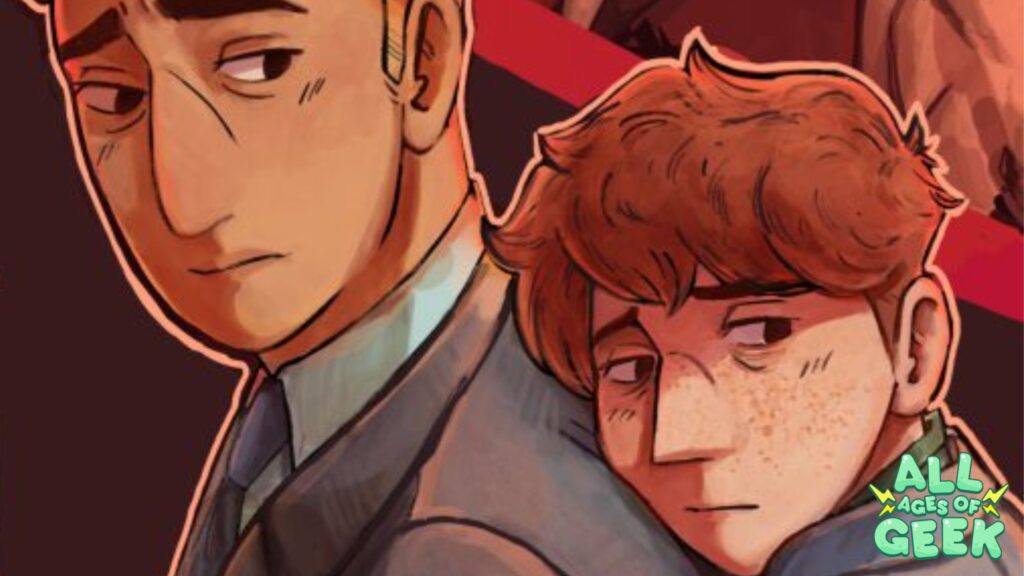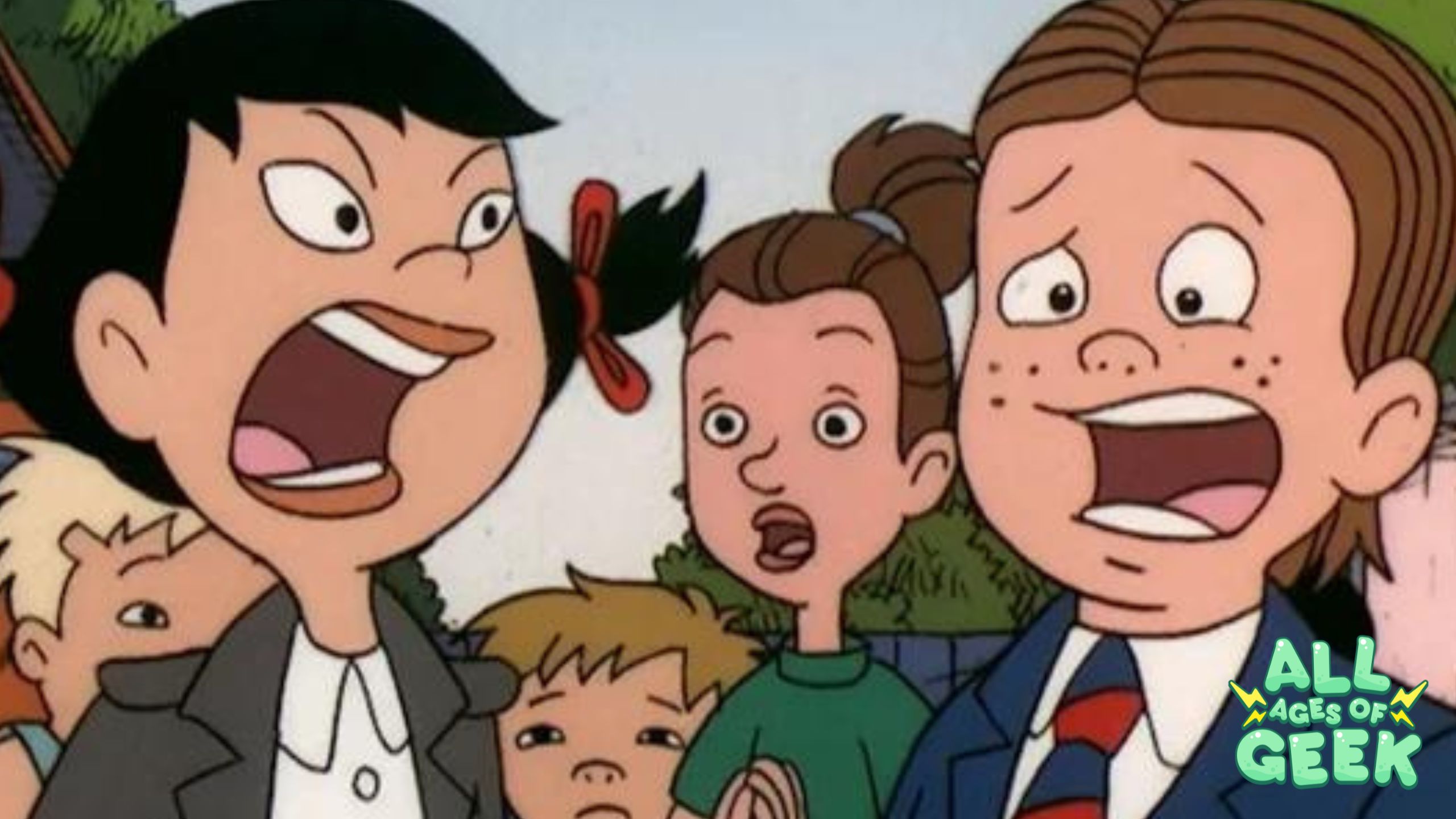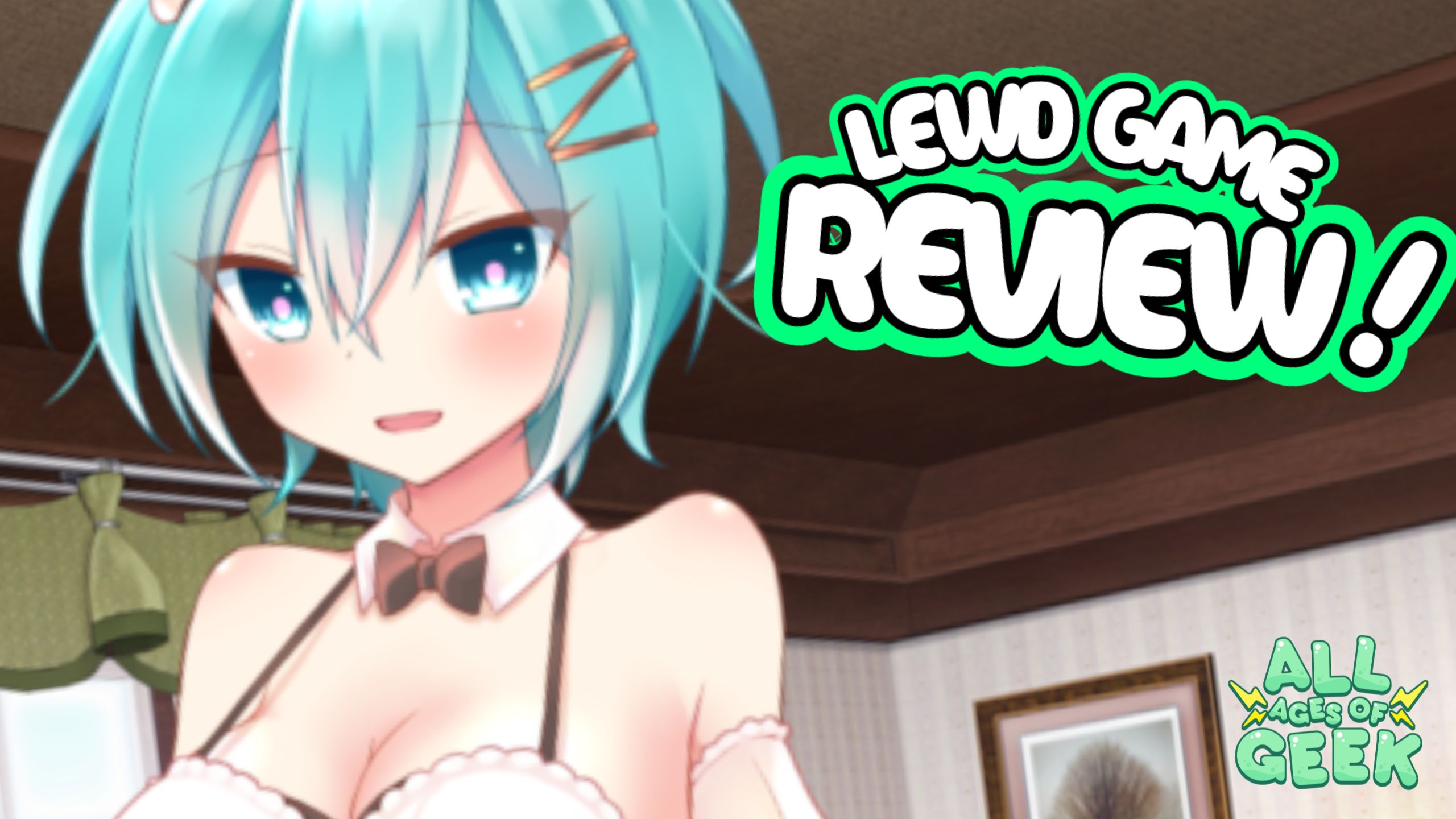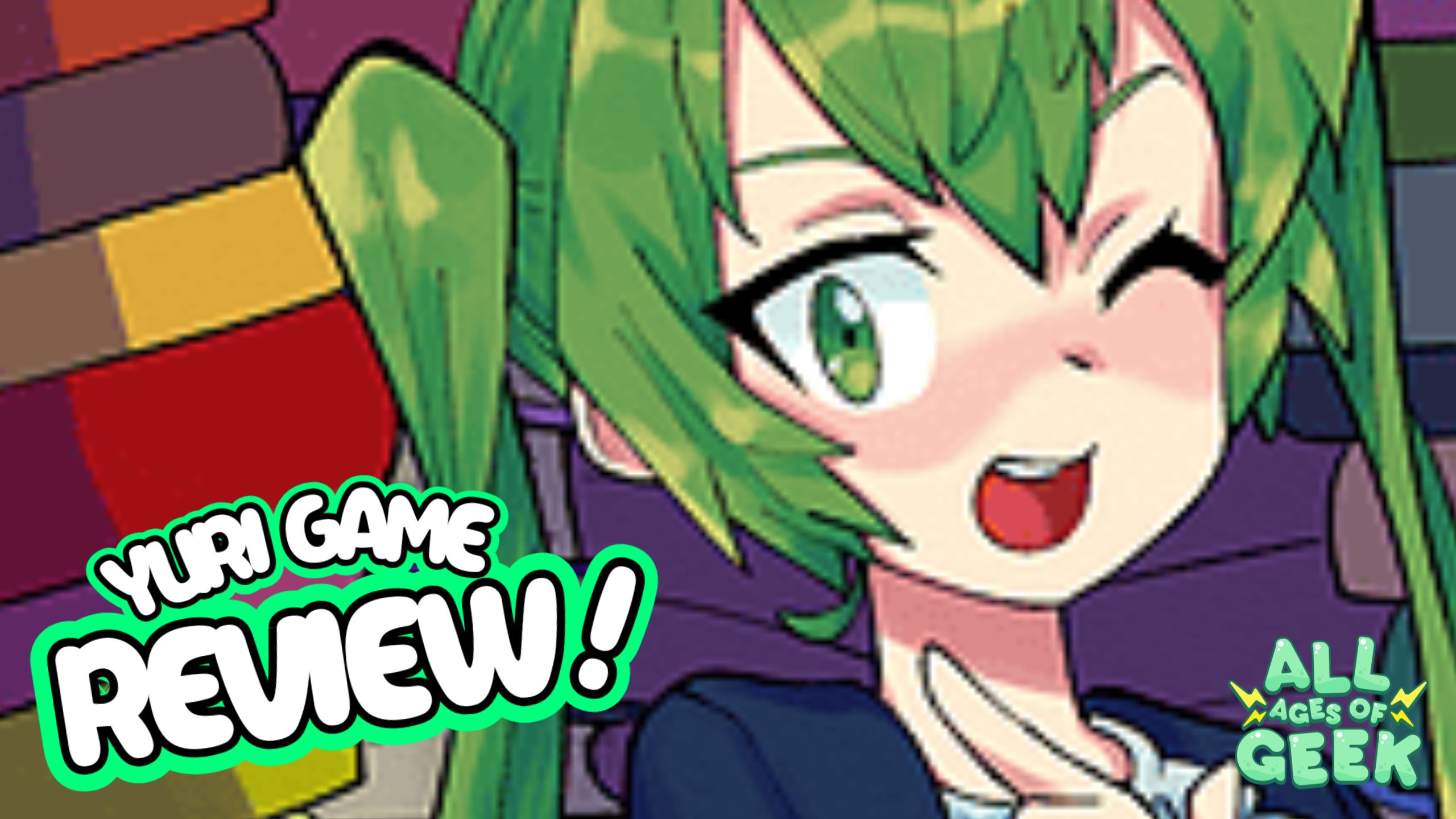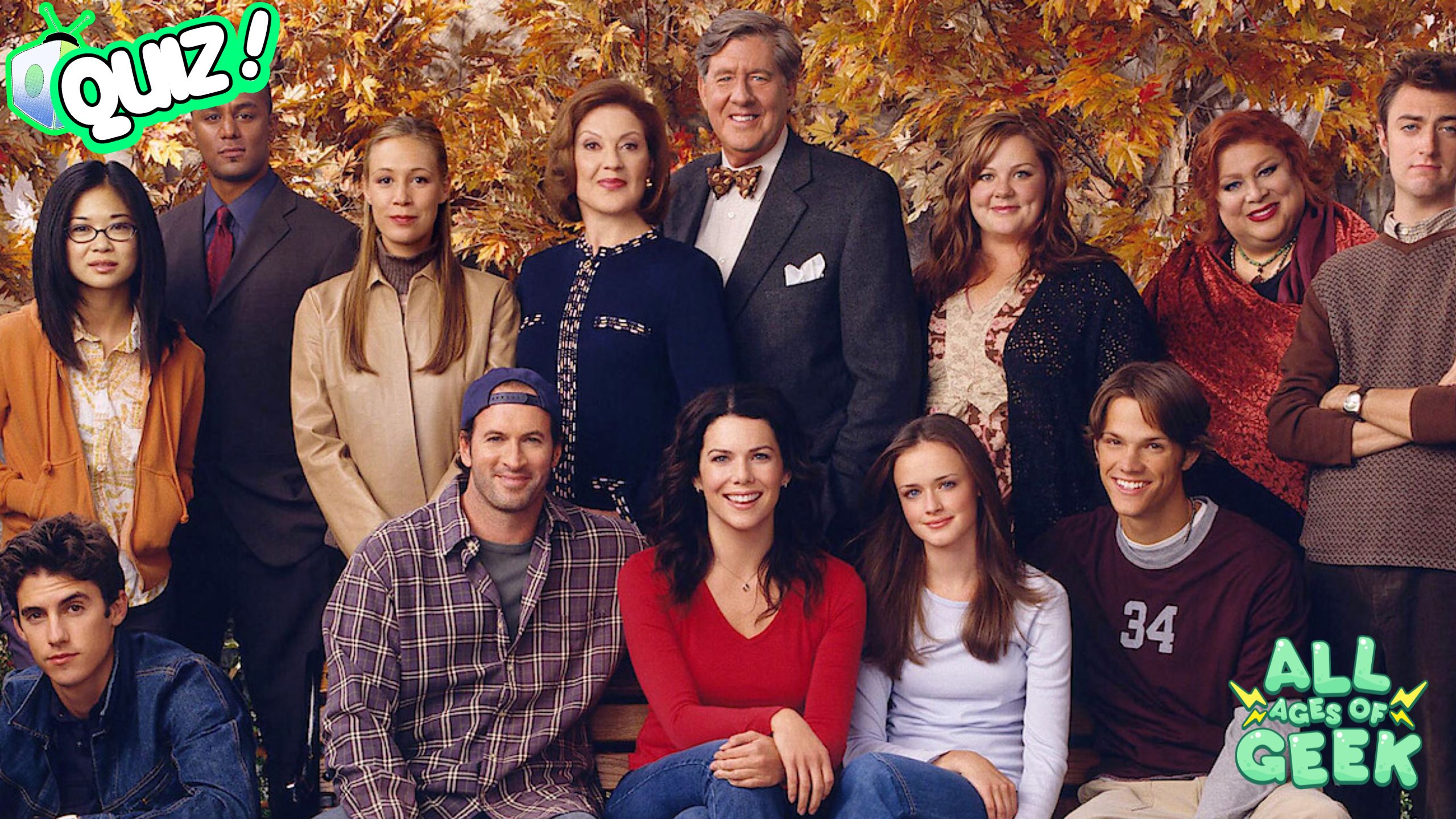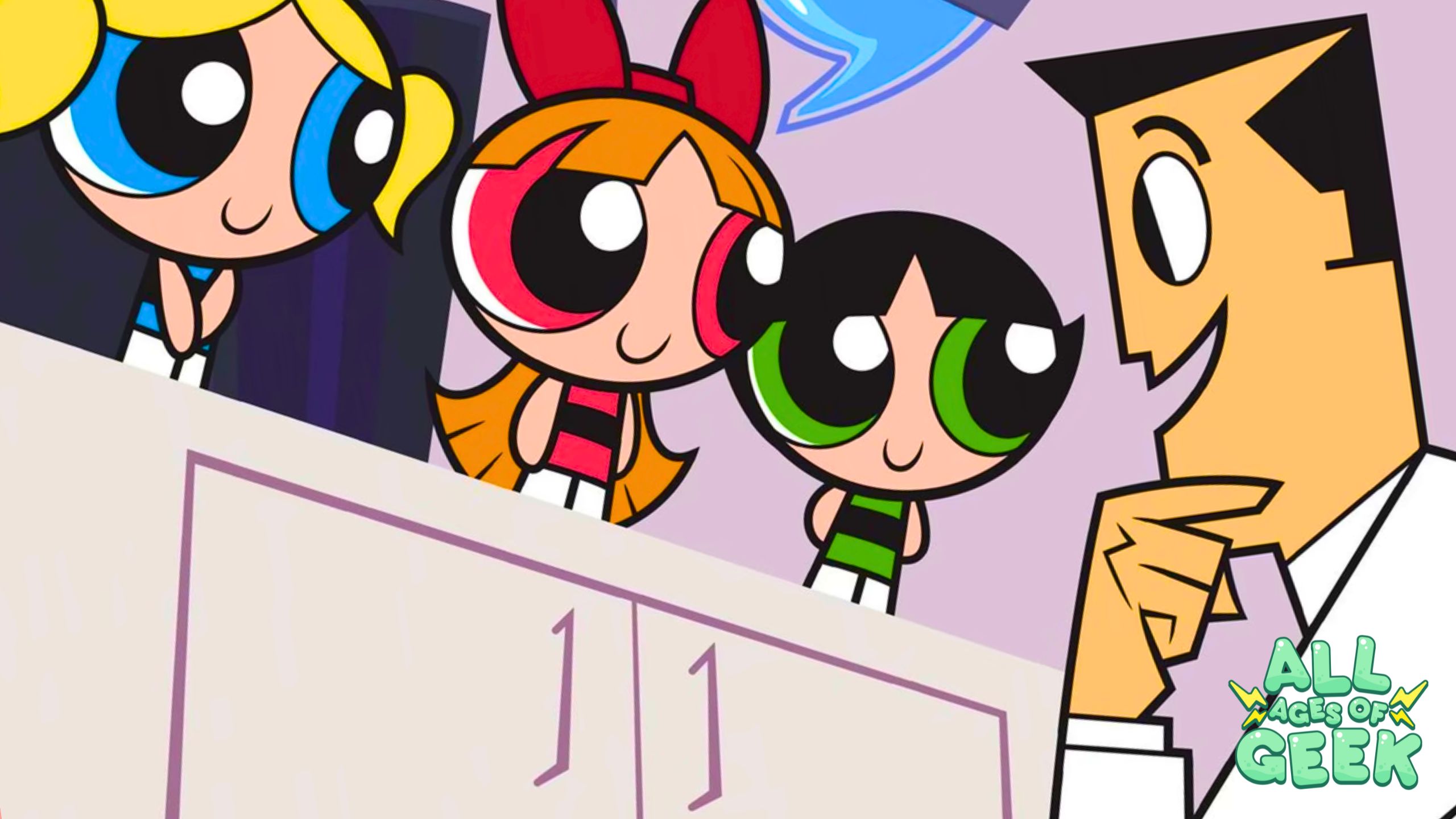Interview with Felix Whetsel creator of “Tell Me Where We’re Bound” – All Ages of Geek Tapas Reviews
Hello, lovely people! My name is Emily, All Ages of Geek’s LGBTQAI+ analyst and writer, and I’m thrilled to introduce today’s featured artist. Meet Felix, an artist with a passion for history and telling stories about LGBTQ people in historical settings. Felix’s project, “Tell Me Where We’re Bound,” is a testament to the idea that LGBTQ people have always been here, and they deserve to have their self-indulgent stories told. Join us as we dive into Felix’s creative journey and explore the incredible world of “Tell Me Where We’re Bound.”
Note from the Creator
Hello! My name’s Felix, pronouns he/him, and I’m a 30-something year old artist currently revisiting a life-long love of history with a passion project called Tell Me Where We’re Bound. I enjoy telling stories about LGBTQ people just living their lives in a historical setting because we’ve always been here, we ain’t going nowhere, and we deserve to have self-indulgent stories. This is my first big big long-term project, and I’m still on the road to learning how to make it into a sustainable career.
Socials, Patreon, and Ko-Fi:
Read Tell Me Where We’re Bound:
https://tellmewherewerebound.carrd.co/
What initially sparked your passion for creating content, and how did that desire evolve into the work you produce today?
As cheesy as it is, I’ve been drawing for as long as I can remember. One of my brothers growing up drew a lot (he also had a webcomic way back in the early 2000s), and I was making Powerpuff Girl and Lord of the Rings OCs in elementary school.
I was actually recently joking with a friend that you can tie a direct line between the American Girl Doll line and TMWWB, because when I was a little kid I was a massive history nerd and that really began with those dolls. Any time it snowed I would throw on a long skirt and pretend I was a little girl in the American frontier, then when I got older I started building expansive family trees of royal families inspired by hours of trudging through the Wiki pages on the Habsburgs or Bourbons or whatever wild royal family caught my fancy. So really I’ve always gone through these phases of getting really really into a very specific historical thing and then creating characters around them.
Can you walk us through your journey as a content creator, starting from the moment you first decided to explore this medium?
In highschool I had a DeviantArt (still around, but I think everything has been archived) and a LiveJournal where I was posting constantly. It was a lot of historical stuff, as well as Fallout and Metal Gear Solid fanart, and some more modern OCs because at the time I really liked this artist on DeviantArt that went by Our. I was just making stuff that made me happy because I was like 15 and algorithms weren’t a thing yet.
But I stopped drawing characters and writing stories in college and went through a phase where I was making abstract stop motion music videos. They were bad, I wasn’t having fun, and those were dark days creatively haha.

So even though I’ve been drawing forever and graduated with a degree in animation in the winter of 2016, I guess I wouldn’t have considered myself a content creator until 2018 or so when I started posting fanart for the Silmarillion fandom. Completely different vibe from mid-century historical fiction, but it’s what gave me the drive to start drawing digitally and designing characters again. The fun thing about making stuff for the Silmarillion is that none of the characters have canon appearances or descriptions beyond occasionally hair or eye color, so there’s a lot of room to play with their designs, especially when it came to making characters looks related since the different families are such an important part of the plot. I remember the first thing I drew for that fandom was a family portrait of the Sons of Feanor and ever since then the compliment I get the most is that people love how I draw noses and make family members look related.

Your work touches on various themes and subjects. How do you choose which stories to tell, and what do you hope your audience takes away from them?
I always want to tell stories about whatever time period I’m interested in at the time, but with the twist being that the characters are in the background of major historical events. For instance, I have a project on the back burner right now about a painter and an architect that worked on the Palace of Versailles during the early stages of production. It’s also important to me that the stories are queer, but that the trauma the characters experience isn’t a result of their identities but rather extenuating circumstances.
Beyond wanting to tell stories of the ‘behind the scenes’ people if you will, I don’t think I ever consciously go into a project with a theme in mind. When I started TMWWB, I knew I wanted:
- To tell a story about casino employees working with the mafia and how they get in over their heads with
- A trans main character who hadn’t transitioned medically
- Who feels stuck under the thumb of of power hungry cousin
- And falls in love with his bodyguard
That was pretty much it. But then as I started planning, writing, sketching, etc. it evolved into a story about letting go and moving on even though you’re afraid of the unknown, coming to terms with being unable to fix your loved ones, and how greed can rot someone from the inside out. Not that any of that has explicitly come up in the comic yet haha.
With this particular story, the only thing I truly wanted my audience to take away from it was that trans and queer people have always been around. While I’m writing it in a sort of idealized way that may not be 100% historically accurate, it was important for me that my trans readers who enjoy historical fiction got a story where the character’s transness isn’t a point of contention and is never used against him. My in-universe reasoning for it being that “ayyyy what happens in Vegas stays in Vegas, bayyybyyy!!!” Like there is so much already going on in that city that no one has the time to care about that sort of thing.
What led you to choose your current platform for sharing your work, and what aspects of the platform do you find most appealing?
Honestly I had never used Webtoons prior to publishing on it. I knew it was the biggest webcomic site around, and the interface seemed easy enough to use (I had no interest in trying to set up my own site for a myriad of reasons.) So far I’m loving it! I like the amount of audience engagement I get because I really enjoy seeing my readers’ reactions to the story (especially all the readers excited for the positive trans representation).
I also publish on Tapas and GlobalComix. I don’t spend as much time on Tapas, but find the interface equally accessible, and I’m brand new to using GlobalComix so only time will tell with that one. Although I do love that they (GC) cater to all kinds of comics, and their monetization system seems way easier to navigate, and I love that I’m able to schedule a post but also share a private link, because that’s how I give my Patrons their early access.
Are there any aspects of the platform that you feel could be improved, or perhaps have been challenging to navigate?
(I’m only gonna talk about Webtoons for this once because I have the most experience with it and haven’t run into any hiccups with the other two yet.)
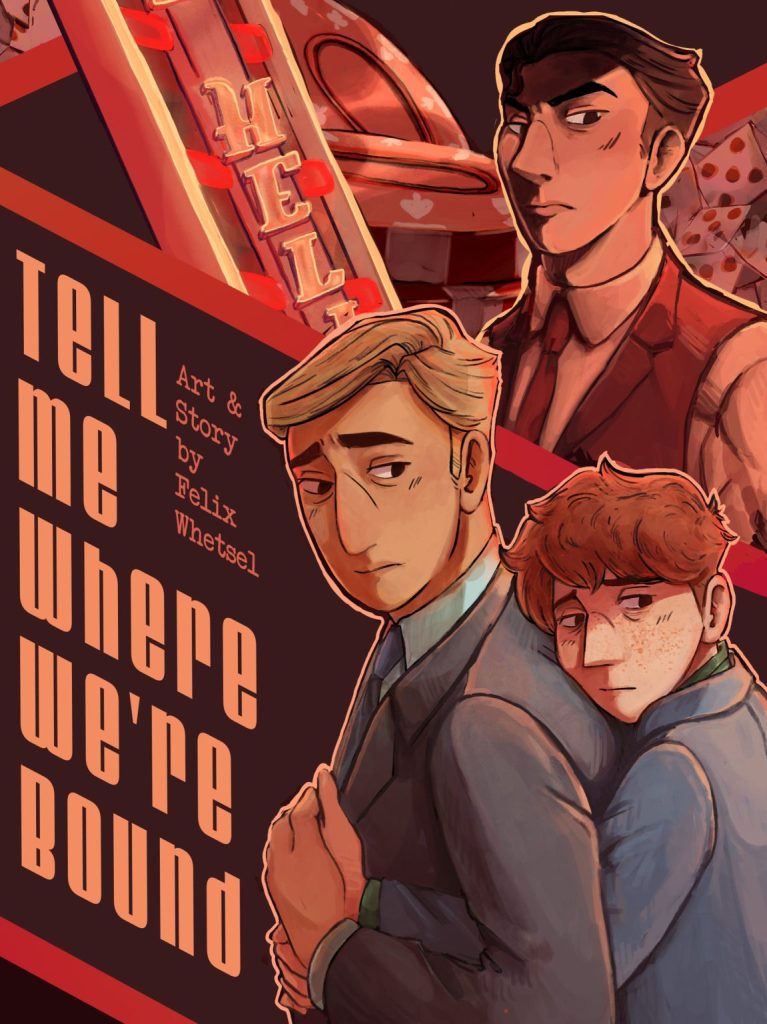
My biggest beef with Webtoons is the lack of notifications, especially because it’s clear they’re trying to push more of the social media element with the addition of creator page posts. I just don’t understand the justification of trying to turn something into social media, when you’re going to hinder the ability to interact with your audience. It’s frustrating that I have to use a browser extension to see an inbox of incoming comments.
In your opinion, what distinguishes independent content from mainstream content, and why do you think the indie scene is important for the overall creative industry?
Just the vast amount of agency you get as an independent content creator. The stakes are a lot lower when you don’t have a team of people above you trying to okay your plans or ideas, so the playing field is so much larger. I think this is especially important for queer content, which we see time and time again getting canceled or under-advertised, or just made for Big Company clout. And I think you find the widest variety of queer stories in independent content, instead of following whatever tropes Hollywood or Disney think they have to include to appeal to the market.
As a content creator, what are some unique storytelling techniques you’ve developed to set your work apart from others in the genre?
Something that I’ve been complimented on a bit is using historical easter eggs to really flesh out the setting. I think a good example is a scene of my characters visiting a record store, and I feature a ‘New Releases’ sign that lists albums that would have been released in the months prior. Or just making my characters do little things – like writing a check – that have zero effect on the plot but play, what I think, an important part in making it feel like these characters really do live in that time period. My story doesn’t reference familiar real-world and political events of the time, outside of Vegas-specific ones, so things like the environment are incredibly important to the story.
I also use music to set the mood, or give you an idea of the characters’ taste, and I think that’s something you don’t see very much in comics in general.


Apart from your main work, what other avenues do you explore to engage with your audience, such as social media, live events, or merchandise?
Every now and again I like to do a pop-up Q&A on my instagram stories, like prompting questions about the process or answers from the characters themselves. In my experience people like to know the behind the scenes of creators they like, I know I always have. And I find those sort of character building questions fun because people will ask things like “what are their comfort foods?” and they get me thinking about things I wouldn’t normally find the time to think about, and it fleshes out the characters.
I also opened a Discord server dedicated to the comic. It’s pretty small at the moment, but we have some fun conversations about things like my main character’s boyfriend adopting a crusty street cat named lasagna and now that’s a canon thing that happens.

Creating content can be both rewarding and challenging. Can you share some of the struggles you’ve faced along the way, and how you’ve overcome them?
Trying to balance it with a full time job is definitely my biggest struggle. I also have ADHD and, while I’m medicated and that does help, I still have days where it’s hard to fight the brain fog. It’s especially frustrating when I’m trying to connect the dots between various plot points and mob families and political intrigues and literally every single other part of the story. As a result, I’ve thrown a million different organizational and process things against the wall to see what sticks: trying out different ways to thumbnail, buying a corkboard so I can go full Pepe Silvia, a private Discord server with channels for different characters/locations/etc, a Google Site to create a sort of Encyclopedia for myself. I still haven’t 100% found the best solution, but with the way my brain works I think if I didn’t jump around I would get bored with the whole process. Experimentation keeps me engaged.
Are there any creators, artists, or writers who have been particularly influential or inspiring to you? How have they shaped your creative journey?
Gosh, there are so many. I think my first introduction to comics that weren’t superhero comics was buying Dykes to Watch Out For in college. But the artist that I remember inspiring me to want to make comics in the first place was definitely ND Stevenson. When I started working at a comic shop, Lumberjanes was one of the first comics I started regularly buying, but I had already been following him on Tumblr for years.
I’ve also been a huge fan of Leyendecker since I was 13, which is probably where I got my love of drawing men in suits haha. I remember copying his works into my sketchbooks through highschool. But like I said earlier, I’ve always been a huge history dork.
Some of my favourite comics that have had a direct impact on TMWWB have been Yes, Roya from Iron Circus comics and The Damned from Oni Press. Obviously they’re both historical fiction, but they’ve also been two of my go-tos when I need to step away from the comic and refresh my eyes when I’m stuck. Yes, Roya gave me a lot of visual inspiration in terms of how to set the period without constantly having to remind people “HEY THIS IS THE 1960s!,” while Damned has been a lot of help when I’m trying to wrap my head around action sequences.


Other artists that inspire me are Felix D’eon, Fiona Staples, Karl Kerschl, Carey Pietsch, Shelby Criswell, and Jordan P Jackson (who is a personal friend of mine and one of the hardest workers and nicest people I’ve ever met).
For aspiring content creators, what are some practical tips and advice you would give to help them find their own voice and style?
Make things that make you happy, and tell stories that you’re interested in. There’s always going to be at least one person who will be equally interested in it, and probably more than that. But even if your first or second project doesn’t take off, that experience of just creating because you want to will help you to develop something that is uniquely ‘you’. When I started TMWWB I didn’t think anyone would be interested in such a weirdly specific period of time chock full of historical references and easter eggs, but I’ve gotten quite a few people that have told me that the unique setting is what drew them in, or how excited they get when they learn something new or discover a song they’d never heard before.
But not gonna lie, I never know what to really say to the question about finding style, other than draw what you want and draw lots of different things. I think as you keep drawing and experimenting and exploring ideas, it just sorta falls onto the paper eventually. For me at least, when I look at other artists I naturally see something and go “oh I like the way they draw [x], so I’m going to use that as inspiration when I draw [x].” Also drawing from life is majorly helpful. The more you do it and the faster you get at it, the more you’ll see it evolve into something that is ‘you’.
Can you tell us about your creative process, from brainstorming ideas to the final execution of your projects? How do you stay motivated and consistent throughout?

My creative process is all over the place. I’ve tried a million and a half different processes to get from outline to final. A lot of my brainstorming comes from when I’m doing research – all of my Vegas and mafia-centric books are filled to the brim with post-its and notes. When I find something that particularly inspires me, I’ll throw it in my private Discord server and then when I’m revisiting and fleshing out the outline, or working on a script, I’ll scroll through and work that in.
Sometimes these notes are massive research for plot points like why the mafia hold on the strip started to degrade in the late 60s, and other times it’s things like a page from a 1965 Sears catalog showing a radio my character would have or just a silly quote that I want to work into a scene.
All of this research is one of my biggest motivators, because I love researching. Going through catalog archives, watching 60 year-old home videos, reading out of print books. Having this extra level of work is probably one of the big reasons I’ve finally been able to keep up with a project for this long, because otherwise I get burnt out doing nothing but character building, scripting, and drawing. Probably part of my ADHD, but I need to be able to bounce around to keep interested.
The process for actually creating the comic is a little more streamlined, but I still ping pong between tasks. I’ve never figured out how people are able to script straight through and then thumbnail, so I do both at the same time. Sometimes I have Procreate open while scripting on my computer, other times I just write the dialogue with the thumbnail. But once I get the whole script typed up and the thumbnails imported into Clip Studio, I’ll do a first pass where I lay everything out – spacing the panels, putting in the text and speech bubbles – and then I’ll go back in and polish the sketch. This second pass usually also involves editing the dialogue. At this point, I shoot the finished script off to my editor (my very good friend Jean-Gabriel, who I originally met through the Silmarillion fandom), and I do the final edits.
Everything else is pretty streamlined. Sometimes I’ll play around with different tools, like image materials, or different blending modes to create different types of ambience, but it’s more or less just lineart → flats → shading.

(I literally don’t know how I would do any of this without Clip Studio.)
In terms of consistency, I’m a huge fan of creating assets, color sets, and brushes. I try to automate as much of the process as possible to both keep it visually consistent, but also to streamline the process. It’s more important for me to get the story out there and get it finished than to make sure every single panel is its own stand alone illustration. I also have multiple folders of reference for different articles of clothing, rooms, pieces of furniture, etc. and have created re-usable materials for things like paintings so I don’t have to hand draw them every time. I know this can be a bit of a slippery slope in terms of it potentially looking like everything is copy and pasted, but I try to only use them in a way that they fall out of focus so hopefully it isn’t too noticeable.
How do you balance the creative and business aspects of being an independent content creator, such as promoting your work and managing finances?
Right now I’m at a point where I don’t really need to focus on the finances part, since I have a full time job, but what little bit I do focus on I make sure to try and work into things I already need to get done to lessen the workload. Like one of my Patreon rewards is behind the scenes of things I’m already working on, or when I make reels I’m using them to tell a funny joke about my characters or build some of their development. At the moment I’m not worrying about putting extra work into promotion, however I am in the middle of getting the first chapter of TMWWB ready to go to print and once I do that I’m going to start creating promotional material like buttons, stickers, and prints so that I can maybe squeeze my way into an artist alley next year.
Funding creative projects can be challenging for many artists. What strategies have you employed to fund your work, and are there any resources you’d recommend to other creators?
I’m pretty much exclusively using my day job to fund my work. I do get some side money from Patreon, however I don’t promote it as much as I would like since I don’t have the time to put extra work into exclusive rewards other than early release and behind the scenes. I’ve had some things suggested to me to make Patreon more enticing, like a Patron-exclusive monthly postcard, but it’s hard at the moment for me to find the time to do that on top of everything else. Maybe someday!
I would say that if you’re in the same boat as me where you have to have a day job and you can afford to do it, use any bit of money you can to build up the equipment needed to some day fund your own work. Over the last couple of years I’ve invested in a printer, a button maker, and a Cricut, all of which I’ve played around with to make little things that could someday become merch. It’s much cheaper in the long run to print those sorts of things at home, and will allow you to spend that money on things you can’t print at home like acrylic charms or large prints. I also take advantage of sites that have payment plans (like GrekoPrinting and Imprint) for things like business cards and to build up a backlog of products, which includes fanart since I know those are some of the bigger sellers as Artist Alleys.
How do you stay updated on the latest trends and developments in your industry, and how do you integrate this knowledge into your work?
Honestly I don’t think I do a very good job of that haha. This is my first foray into trying to build a marketable “product” so I’m still trying to figure out the ins-and-outs of the industry. I do follow places like /r/webtoons or the official Webtoons Canvas instagram account to keep up with things like events, or developments in regards to their ad programs, and I know a bit about the print industry via my comic shop job, but at this moment I’m putting more focus into maintaining a sustainable work schedule that prevents burnout.
In what ways do you believe the creative industry is evolving, and what opportunities do you see for independent creators in the future?
Oof, this is a toughy, because I have a lot of conflicting opinions. On one hand, I think it’s far more accessible for your average comic artist to get their work in front of people’s eyes – if you’re brand spanking new to making webcomics, you have a handful of websites to post to that have massive reader bases instead of having to worry about paying for a host, coding a website, and then marketing that elsewhere. But on the other hand, I don’t think these websites, and the internet at large, make it very easy for people to get noticed. If you’re posting with no expectations of ever making money, then that’s great!
However, the constant evolution of the algorithm, trends coming and going at lightning speed, and practically needing a marketing degree to know how to promote your work is a massive hurdle. Like, not only do you have to have a visual style that’s appealing and a story that keeps people invested (and all the work that goes into that), you also need to know which sound is trending on TikTok, what time of day you get the most engagement on Instagram or Twitter, and/or what hashtags (if those even do anything these days) pull in the most viewers.
But like I said, if you’re literally just excited to be making stuff and putting it out on the internet, I think we’re living in a great time because it’s technically easier to get people to see your stuff. And I think there’s so much freedom for people to tell the stories they want to tell and reach those readers that’ll be excited for them. You don’t have to go through a big publisher who would nit pick and possibly take away elements to make it easier to chew for the mass-market, instead you have these very accessible websites with massie reader bases. Not to say there aren’t some fantastic publishers out there, but if you don’t have the means to get published by a company, you can do it yourself! Not only is it easier to publish online, it’s easier and easier to physically publish on your own.
Collaboration can be an essential part of the creative process. Have you worked with other creators or artists on projects, and if so, how have those experiences shaped your work?
I haven’t yet, but I have some plans in the works with a friend who’s already published. We’ll see!
What are some personal or professional goals you have for your career, and how do you plan to achieve them in the coming years?
Finish my comic.
Real talk though, I’m currently taking things one step at a time. This is my first big project and it’s going really well so far, but I’m trying not to get ahead of myself yet. I have some little goals – get physical issues out there, set up at an artist alley – and of course I have that 

As a creator, how do you measure success, and what achievements are you most proud of so far?
I considered TMWWB a success when I started getting comments from people legitimately excited about it in a way that you see in fandoms. Headcanons, speculations, noticing little details because they read it a third time. So I guess I measure success by whether or not people feel some sort of connection to my work in a way that they want to talk to me about it.
Ultimately I’m writing this comic because I have the need to get it out there and I care deeply about these characters and their stories, so seeing other people feeling the same is indescribably exciting.
Really the achievement I’m most proud of is how far into TMWWB I’ve gotten. I’ve never been able to find a work schedule and work-life balance that enabled me to stick with something this long, because I’ve always struggled with confidence. But for the first time in my life I actually 100% love and am indescribably proud of the work I’m making. There are of course little things in terms of the actual process where I’m like “aw man I really beefed that one,” but I always remind myself that I’m still learning and, for a first comic, I think I’m doing a pretty dang good job.
Lastly, could you share an anecdote or experience from your content-creating journey that has had a profound impact on you, and what did you learn from it?
Honestly just finally making the jump to comics. I had a lot of personal struggles going on prior to starting the TMWWB journey where I just felt very lost creatively and all I did was sleep and work my day job with the hope that my brain would come up with something to draw, and making comics added a level of structure that helped level out my life. I think a lot of it has to do with the pressure of putting things out on a schedule, but now I also feel less lost because comic making is in itself a very structured thing.
There’s always something that I could be working on for it, so even if I can’t get myself to do lineart or shading or whatever specific part of the comic needs to get done. If I don’t feel emotionally up to sitting at my desk but I want to make some progress because progress feels good, I can always do some scripting on my phone in bed or picking out furniture for some character’s office that I would have needed for reference anyways. Which isn’t to say I don’t let myself take breaks, but if I’m having a depressive episode where I would have in the past felt guilty for not getting things done, now I have a big project where I can feel good because I was able to cross even the smallest thing off my list.
Essentially what this jump has taught me is that I thrive creatively when I have a project with all kinds of little pieces. I needed to take into account that fact that I’m not always going to be in a headspace to sit and draw for however many hours at a time, and if that’s the only sort of creative work I have then I’m going to smother under the guilt of not being able to do it despite wanting to.
And that concludes our time with Felix and their fantastic passion project, “Tell Me Where We’re Bound.” We hope you’ve enjoyed this glimpse into the world of LGBTQ history and storytelling. As Felix continues to learn and grow, let’s support their journey to turn their passion into a sustainable career. Keep an eye out for more exciting content from All Ages of Geek, and remember to celebrate the diverse voices in our community. Until next time, stay proud and keep on being your amazing selves!
About Stec Studio, All Ages of Geek and “I Married a Monster on a Hill”:
Stec Studio is a New Jersey-based company founded and run by by the Stec Sisters. We specialize in producing interactive comics and novels based on All Ages of Geek media, as well as creating a fully open world Boys Love Universe called BLU Media. This universe is being built from various media forms, including readable media, games, and animations.
Our main series, I Married a Monster on a Hill, is a popular WEBTOON that tells the story of a retired knight who falls in love with a half-monster. We are also developing an in-production visual novel called I Married a Monster on a Hill: Dates, along with an upcoming Wattpad Exclusive set in the same Universe. At Stec Studio, our goal is to create content that gives people hope and light, and we hope our stories can provide joy and entertainment to all who experience them.


